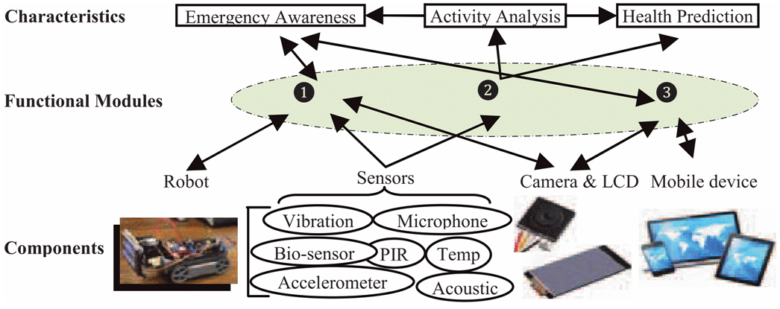For Dr. Lei Wu, the research was personal.
Years ago, the University of Houston researcher lost his elderly aunt, who had passed away after a hard fall in her kitchen. Wu’s family had invested in a wearable, emergency device that would allow her to call for help with the push of a button. Tragically, though, the fall immobilized Wu’s aunt, preventing her from using the device.
Shortly thereafter, Wu began his own research into emergency response systems, and the results could very well prevent others from having the same experience.
“The situation gave me an enormous shock, and I decided to design and fabricate my own device,” Wu said.
This solution used a combination of robotics and wearable technology to overcome many of the problems faced by current emergency response systems, such as the one Wu’s aunt wore. Through natural indicators such as voice recognition and fall sensors, the system can recognize and respond to an emergency without needing to press a button. In situations where users are unconscious or immobile, they can still receive the help they need.
The emergency response system is comprised of three modules – the robot awareness module, the sensing signal analysis module, and the remote control module – depicted in Figure 1 below.

Figure 1: System design – 1) Robot Awareness Module, 2) Sensing Signal Analysis Module, and 3) Remote Control Module
Robot Awareness Module
The Robot Awareness Module uses sensors to monitor the environment and decides how to act based on the data gathered. For instance, the vocal recognition component has 35 pre-set voice commands – such as “help” or “call daughter”– that can be compared, in real-time, to the sound waves projected by the user. After confirming the command came from the user, versus the TV or a visitor, the robot can perform the appropriate action, such as dialing 911 or video chatting with a family member.
Sensing Signal Analysis Module
Beyond vocal recognition, this system also depends on motion sensors – and soon, medical sensors – to quickly identify an emergency. The sensing signal analysis module collects data from each sensor and then uses machine learning algorithms to extract a user’s intrinsic patterns. Being able to recognize uncommon patterns can lead to identifying potential health issues.
While they are currently developing a sensor to capture bodily patterns like temperature and blood pressure, fall detection is the main emergency indicator. Through a series of calculations collected via a wearable device, the fall detection component sends highly accurate information to the robot to trigger an appropriate response.
In other fall detection devices, false alarms are fairly common because accuracy rates are low (i.e. false alarms can be triggered by sitting on the couch). The new system includes a mechanism that self-verifies a real fall versus a false alarm by measuring the angle and acceleration rate of the user.
Once a fall is confirmed, the device waits 30 seconds for a user movement and will alert the user after time has passed. If there is still no reaction, the device automatically calls the listed emergency contact. Previously, an emergency couldn’t be recognized if a person lost the ability to push the button. With this device, however, one can be detected through vocal recognition and fall sensors, both of which do not require user mobility.
Remote Control Module
Lastly, a remote control module allows a person to virtually control the robot through a mobile device. For example, if an alarm is sent to a user’s emergency contact, they can use the application to view the situation through the camera or talk to the user through the robot. This functionality helps eliminate false alarms as the person contacted can accurately assess if there is an emergency.
Once commercialized, the new robot system could be purchased for a one-time fee of around $100, eliminating costly monthly fees. The team managed this price drop by using only necessary components, all of which are pre-made such as the micro-controller, motor, voice sensor, Wi-Fi module, camera, LED screen and more.
“The ultimate goal is to put this system into customers’ hands,” Wu said.
And the team is well on its way to doing just that. One healthcare prospect is interested in installing the system in a number of new senior residences, including four apartment buildings with 600 total units.
By combining these three distinct and connected modules, the researchers have eliminated the need for senior citizens to be conscious and mobile to alert others of medical emergencies – addressing a major downfall of previous emergency response systems.
Learn more about emergency response systems in IEEE Xplore.





